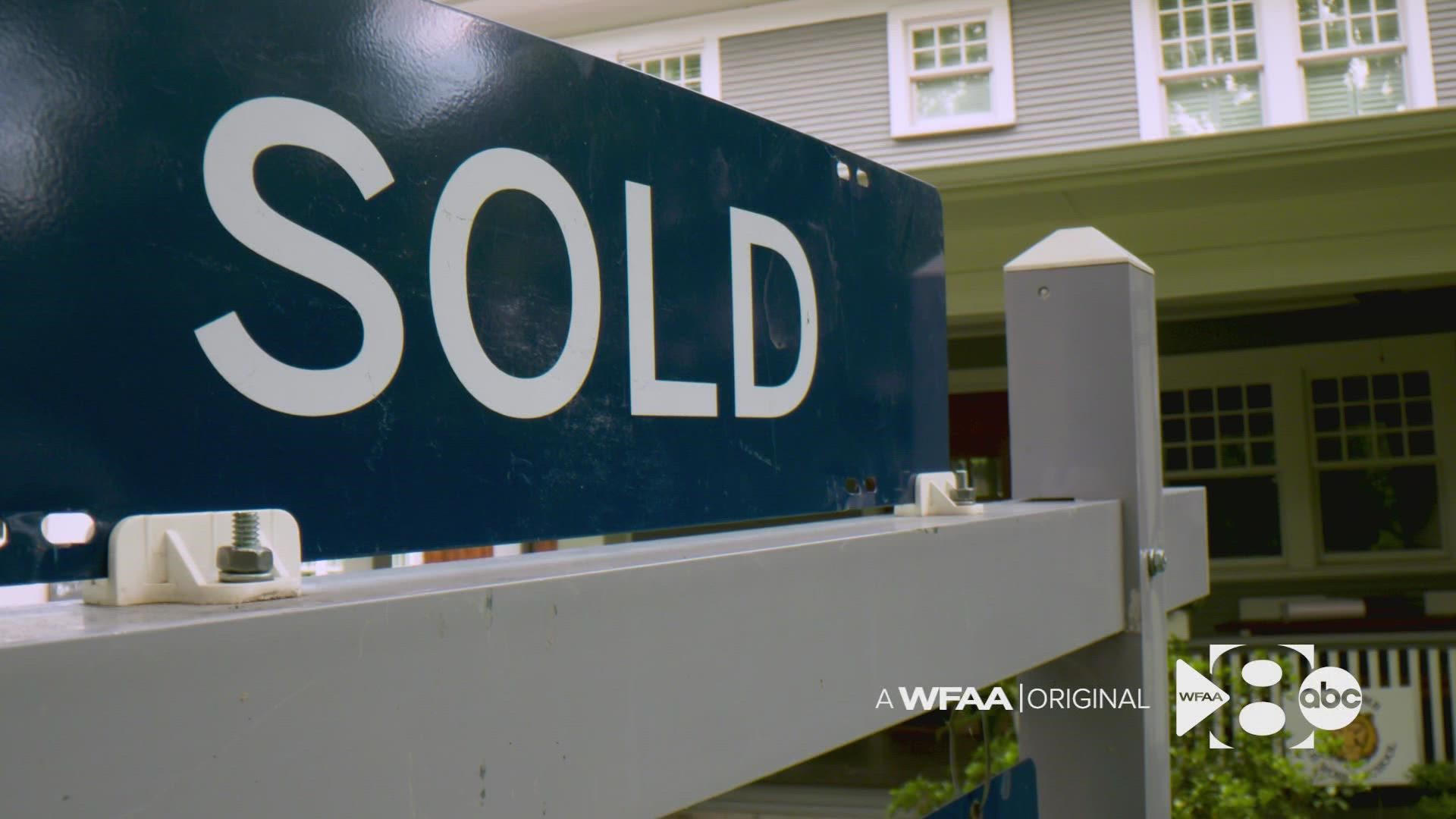DALLAS — Editor's note: This article originally published in the Dallas Business Journal.
Home showings are slowing in North Texas, home inventories are finally rising, and first-time buyers are getting squeezed out of the housing market as mortgage rates rise fast, driving up the cost of monthly payments by hundreds of dollars on an average-priced house.
“About a year ago, you could get a 30-year mortgage just north of 3%. Now a 30-year mortgage is just north of 5%,” Kent Lugrand, CEO of Plano-based InTouch Credit Union, said in an interview with the Dallas Business Journal. “With the average home prices in DFW, that could mean the difference of $500, plus or minus $100 or so, in a monthly mortgage payment.”
The rising rates have taken a bite out of InTouch’s home finance business, Lugrand said.
“The rising interest rates have had a slowing effect on the number of applications we’re getting and the number of homes we’re seeing sold,” he said.
Rising mortgage rates are pushing potential buyers out of the market for homeownership, taking an especially heavy toll on first-time buyers, according to the affordable housing expert for the Texas Real Estate Research Center at Texas A&M University.
Rising rates force up monthly mortgage payments and increase the required income to qualify for a mortgage loan, said Clare Losey, assistant research economist for TRERC.
“As mortgage interest rates increase, purchasing power declines, and households must earn more money to purchase the same-priced home,” Losey said.
Since the start of 2022, the 30-year fixed-rate mortgage average in the U.S. has risen more than 2 percentage points, according to Freddie Mac. It started around 3% and is now topping 5.2%.
In the first quarter, the required income to qualify for a mortgage loan at a rate of 3 percent amounted to $59,665 for the first-quartile Texas sales price of $229,000, Losey said in a recent report. The first-quartile sales price generally reflects the affordable home price to first-time buyers, she said.
Losey said that the required qualifying income increases by more than $10,000 to $70,891 at an interest rate of 5.5%. She estimates only 30% of Texas renters — who make up the majority of potential first-time buyers — could afford the state’s first-quartile sales price at 5.5 percent. This is a decline of nearly 10 percentage points from the estimated 38.9% of Texas renters who could afford the state’s first-quartile sales price at 3%.
Meanwhile, the median list price of homes being put on the market in Dallas-Fort Worth is $440,000, up 3.5% in the past month and 17.8% year-over-year, according to Realtor.com.
The number of active home listings the week of May 21 increased for the fifth consecutive week of gains, according to the Realtor.com data, signaling that sellers are looking to cash in while the market remains hot. Before April, the inventory of DFW homes on the market had declined every week since March 2020.
Meanwhile, the number of home showings per listing in DFW is down — a likely sign that the number of prospective buyers who’d locked in lower mortgage rates during their home search is dwindling.
Dallas-Fort Worth tallied 14.3 showings per listing in April, which is not bad, considering that anything in the double digits is relatively robust. Still, the number of showings per listing in DFW in April fell 11% from March and is down 9% from April 2021, according to the latest data from ShowingTime, a showing management and market stats firm.
Overall, the U.S. experienced a 10.7% year-over-year decline in buyer demand in April, the month that usually begins the uptick of the spring showing season. DFW’s 14.3 showings per listing ranked 10th nationally.

